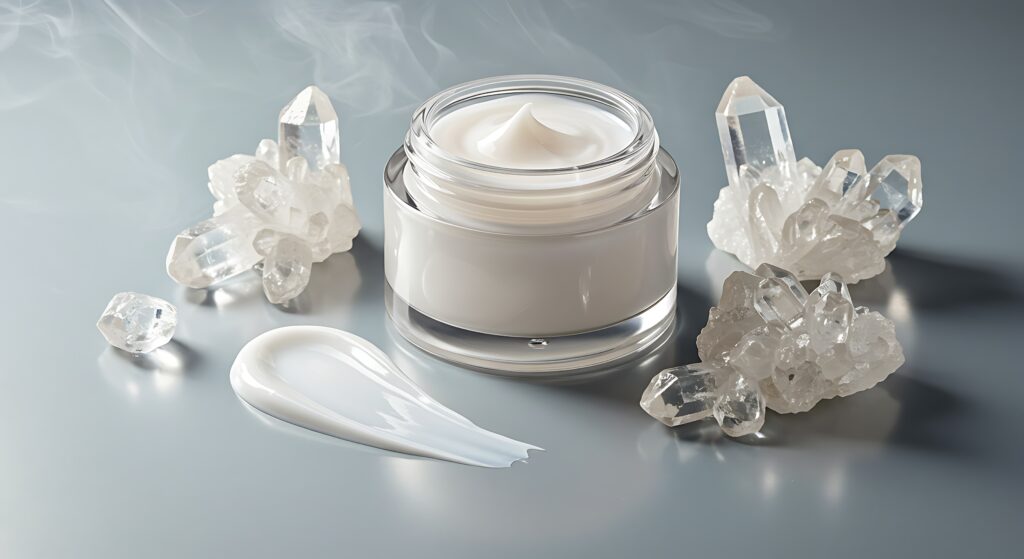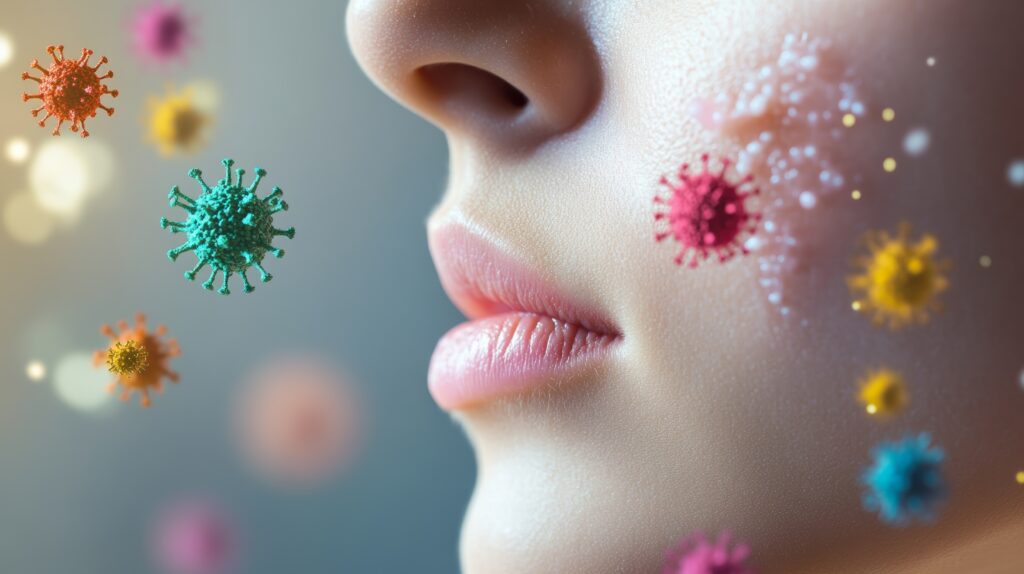Why Surface-Level Solutions Are No Longer Sufficient
For decades, cosmetic formulators have leaned on a familiar set of tools to address barrier damage: topical emollients, occlusive agents, and ceramide blends. These ingredients—while effective to a point—are largely limited to surface-level interventions. They soothe, they seal, and they smooth. But as consumers become more educated and as skin biology itself becomes better understood, the cracks in this approach are showing—quite literally, in the form of recurrent dryness, inflammatory sensitivity, and accelerated visible aging.
A growing body of dermatological and molecular research is reframing our understanding of what true skin health requires. Barrier repair, once the end goal, is now seen as the beginning of a much more complex biological process—one that requires internal signaling, protein synthesis, and structural remodeling at the junction between the epidermis and dermis. At Deveraux Specialties, this evolution in thinking has informed the development and positioning of two exclusive actives: DL CERAcalm™, a ceramide biosynthesis enhancer, and DL Linefade™, a dermal-epidermal junction (DEJ) and collagen IV activator. When used together, these actives don’t just replenish the skin—they teach it to rebuild itself.
Why the Old Tools Fall Short
Topical ceramides remain a popular inclusion in barrier repair products, particularly those targeted at dry, sensitive, or aging skin. However, research indicates that most topically applied ceramides fail to fully integrate into the skin’s lamellar lipid structures. A 2015 study published in Clinical, Cosmetic and Investigational Dermatology revealed that exogenous ceramides primarily accumulate in skin glyphs (surface crevices), rather than embedding into the organized lamellar layers essential for barrier integrity (Zhang et al., 2015). This lack of integration means that ceramides—though beneficial in the short term—offer only temporary relief when used without support for endogenous ceramide synthesis.
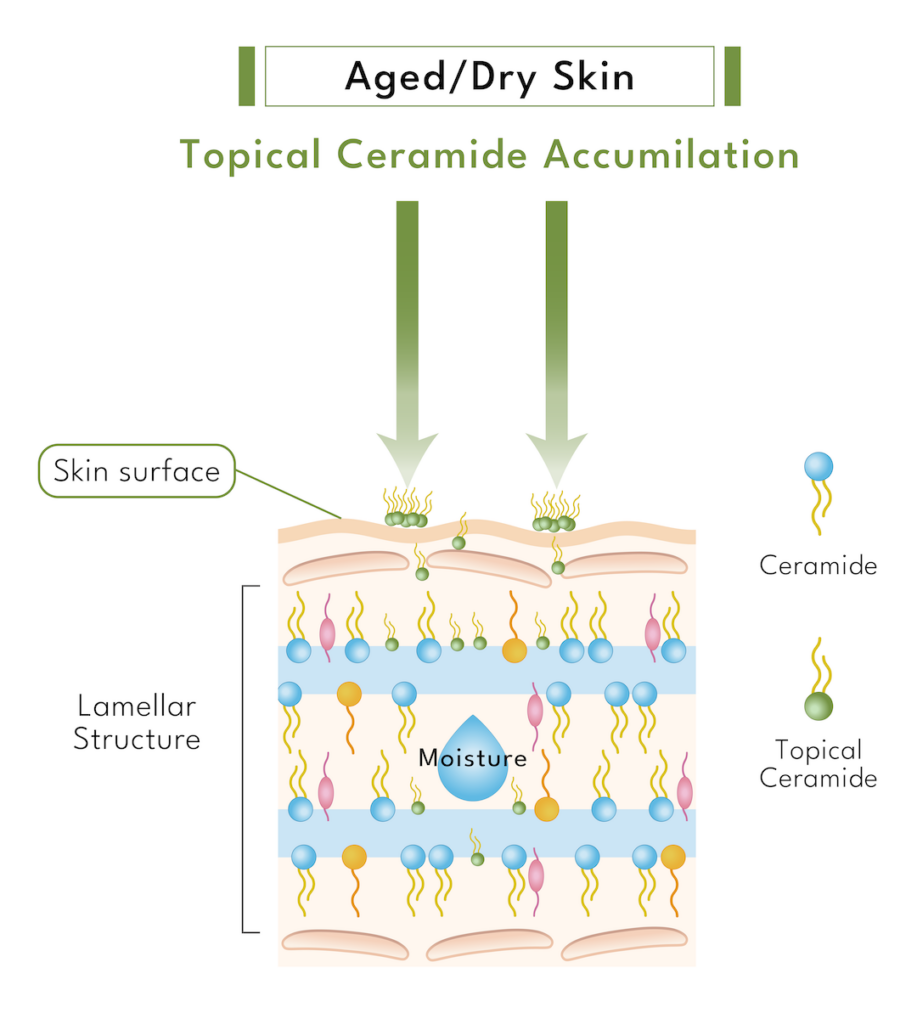
Meanwhile, the deeper architecture of the skin—specifically the dermal-epidermal junction—suffers from another set of challenges. The DEJ flattens and weakens with age, resulting in decreased cohesion between the epidermis and dermis and reduced communication between skin layers. As this junction deteriorates, so does the skin’s ability to retain moisture, resist mechanical stress, and produce essential proteins like collagen IV and VII (Farris, 2005; Schürer & Elias, 1997). Unfortunately, most barrier-focused formulations fail to address this root-level degeneration.
What formulators are left with is a gap—between what the skin needs and what traditional formulations provide. Moisture returns, but not resilience. Surface softness improves, but underlying firmness continues to decline. The need for smarter, bioactive-driven solutions has never been more clear.
How DL CERAcalm™ and DL Linefade™ Address Barrier and DEJ Decline
Enter DL CERAcalm™ and DL Linefade™—two biofunctional actives designed not to mask the symptoms of barrier breakdown but to biologically intervene where skin health begins: at the molecular level. Each active works through a distinct but complementary mechanism that reinforces both the epidermis and the dermis, helping the skin not just recover, but sustain its performance over time.

DL CERAcalm™ is a plant-derived “ceramide influencer” sourced sustainably from the bark of the Indian kino tree (Pterocarpus marsupium). Unlike cosmetic-grade ceramides, which remain largely superficial, DL CERAcalm™ works within the skin to stimulate the biosynthesis of both short-chain and long-chain ceramides. This was confirmed in a reconstructed human epidermis (RHE) model using LC-MS analysis, which demonstrated that DL CERAcalm™ maintained normalized ceramide levels even when co-formulated with actives like niacinamide and vitamin A—ingredients often shown to disrupt lipid balance. Additionally, DL CERAcalm™ reduced inflammation-induced elevations in EOS ceramides, further indicating its regulatory effects in compromised skin models (Kondo et al., 2024).

DL Linefade™, on the other hand, operates at the base of the epidermis, where it targets the DEJ and underlying dermis. A lipid-soluble olive leaf extract, DL Linefade™ activates PPAR-α, a nuclear receptor that plays a critical role in lipid metabolism and skin homeostasis. In vitro studies showed that DL Linefade™ increased collagen IV output by +319% and collagen I by +221% in human fibroblast models. Ex vivo testing confirmed these findings, revealing a +25% increase in ceramides and +52% increase in collagen IV in human skin explants. In a placebo-controlled, 20-subject clinical study, DL Linefade™ significantly reduced wrinkle depth and sagging in as little as 15 to 45 days of application—demonstrating not just biochemical activity, but real-world aesthetic improvement.
When used in tandem, these actives bridge the current formulation gap: DL CERAcalm™ promotes a well-lubricated, resilient stratum corneum, while DL Linefade™ reinforces the dermal scaffolding and anchoring proteins that maintain skin’s structural integrity.
Quantifying Results: The Measured Impact on Skin Structure and Function
The performance of both DL CERAcalm™ and DL Linefade™ is backed not by marketing claims, but by rigorous in vitro, ex vivo, and clinical testing. DL CERAcalm™ demonstrated statistically significant increases in both total ceramide content and filaggrin expression—an essential protein involved in the final stages of epidermal differentiation and natural moisturizing factor (NMF) formation. This dual activity reinforces both the lipid and protein components of the skin barrier, offering a more holistic path to barrier repair.
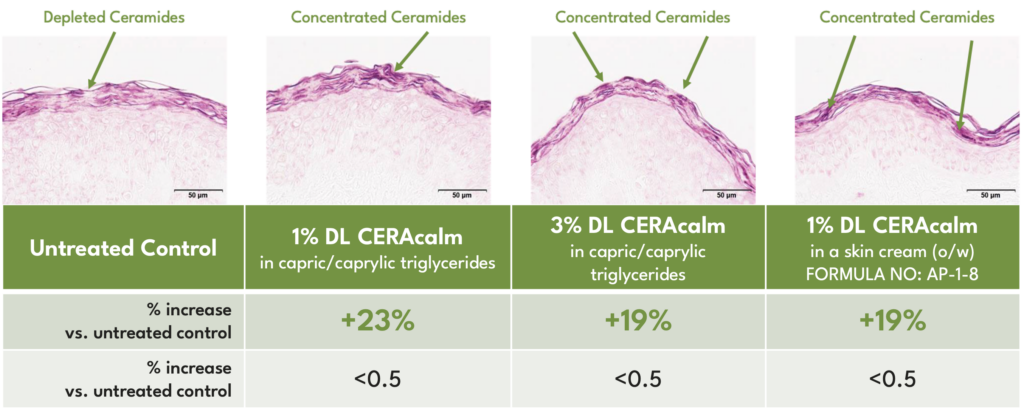
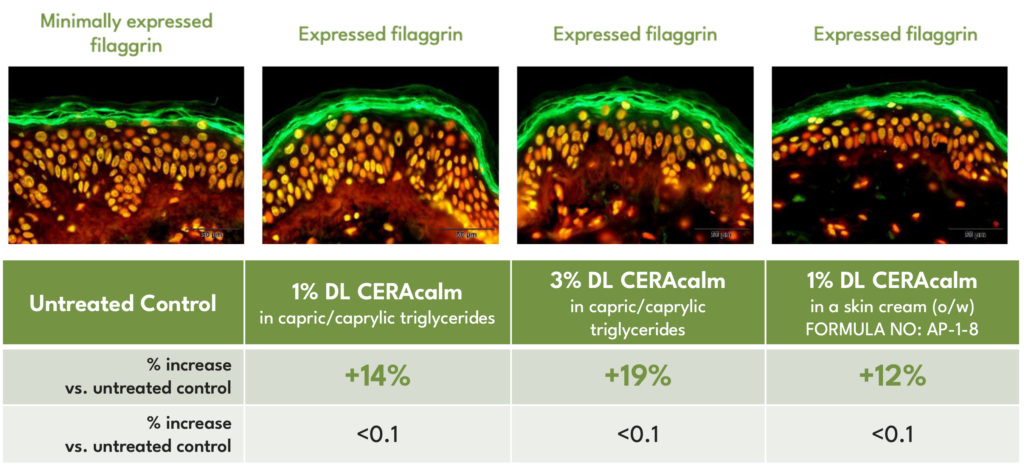
DL Linefade™, through its upregulation of PPAR-α activity, initiates a chain of molecular events that culminate in the increased synthesis of anchoring fibrils (collagen IV) and matrix components (collagen I). These effects directly support the DEJ and dermal resilience, areas commonly ignored by standard moisturizing formulations. The ingredient’s ability to pair with vitamin A and niacinamide without increasing irritation—thanks to its soothing olive leaf base—makes it a valuable asset in multifunctional anti-aging products.
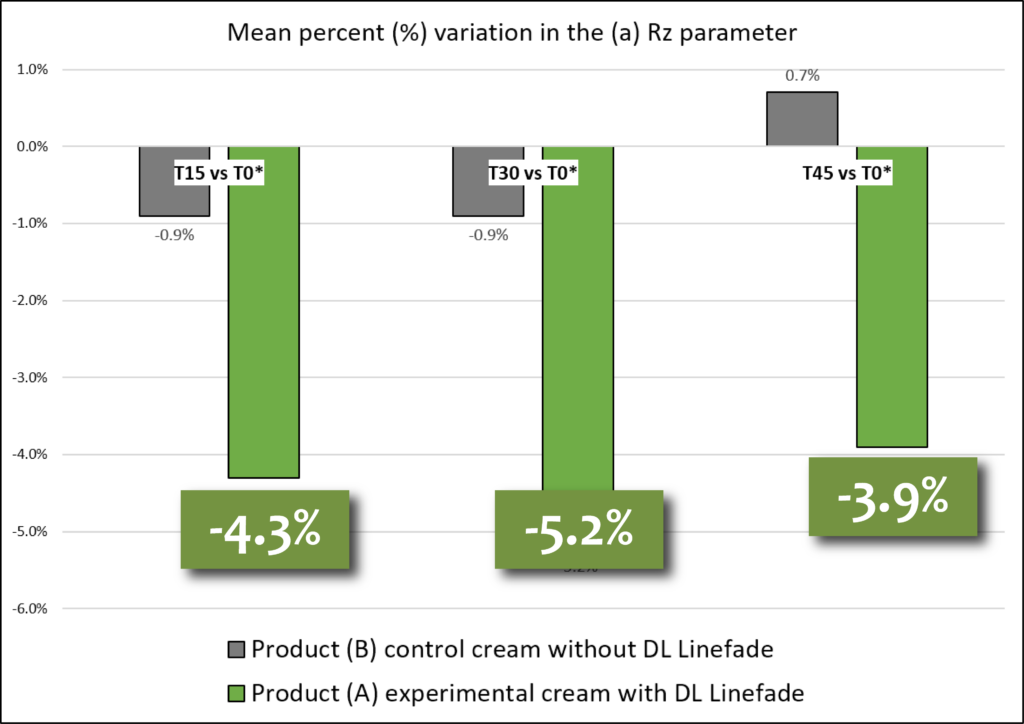
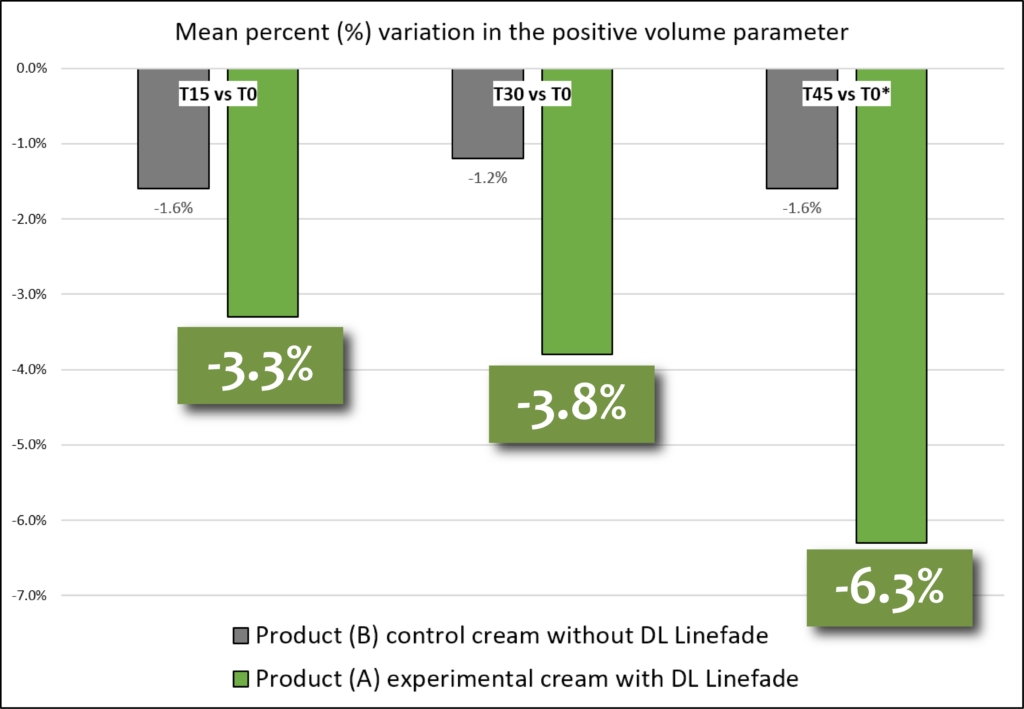
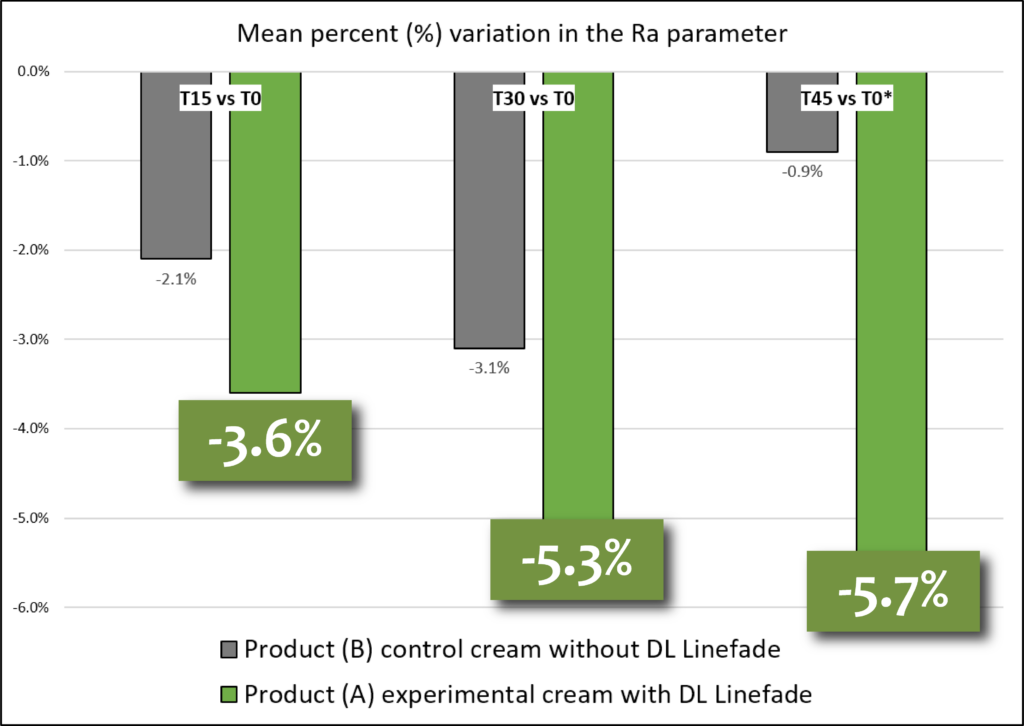
What sets these ingredients apart is not only their performance in isolation but also their compatibility with common formulation systems. Both are lipid-soluble, non-sensitizing, and effective at low use levels (1–3%). This allows for greater flexibility in serum, emulsion, and even anhydrous formats—opening the door for advanced multifunctional concepts in daily skincare, post-procedure recovery, or therapeutic barrier care.
Redefining What’s Possible in Barrier and DEJ Support
As the skincare market continues to mature, so do consumer expectations. Formulators are no longer tasked with simply creating products that feel nice or smell good—they are expected to engineer solutions backed by evidence and driven by biology. Surface-level ingredients will always have a place in cosmetic formulation, but they can no longer shoulder the burden alone. To future-proof formulations, it is essential to integrate actives that not only address current symptoms but also support the skin’s long-term capacity to repair, regenerate, and resist further degradation.
DL CERAcalm™ and DL Linefade™ embody this shift. By targeting both ceramide biosynthesis and DEJ repair, they provide a new toolkit for formulators—one that aligns with today’s scientific knowledge and tomorrow’s market demands. Whether you’re designing products for mature skin, compromised barriers, or high-performance anti-aging treatments, these actives give you the functional depth needed to go beyond hydration and deliver visible, lasting results.
Putting the Data to Work in Your Lab
Barrier repair is no longer a sufficient endgame in cosmetic formulation—it’s a starting point. As research continues to clarify the roles of endogenous lipid production and structural dermal support, formulators must evolve their strategies accordingly. DL CERAcalm™ and DL Linefade™ represent the next generation of functional ingredients—engineered not to treat symptoms at the surface, but to restore the biological systems that keep skin healthy, firm, and resilient over time.
To explore how these ingredients can be incorporated into your next formulation, or to request a sample or technical data sheet, please contact us or submit a request on our website. Our dedicated technical support team is ready to help you unlock the full potential of biologically intelligent skincare design.
Resources:
- Farris, P. K. (2005). Topical vitamin A-based therapies in the treatment of photoaging. Dermatologic Therapy, 18(3), 253–261. https://doi.org/10.1111/j.1529-8019.2005.05026.x
- Kondo, A., Takenaka, Y., Fujiwara, A., et al. (2024). Changes in the composition of molecular species of covalently bound and free ceramides (EOS), and their correlation with disease severity in atopic dermatitis. Experimental Dermatology, 33, e15025. https://doi.org/10.1111/exd.15025
- Schürer, N. Y., & Elias, P. M. (1997). The biochemistry and function of stratum corneum lipids. Advances in Lipid Research, 24, 27–56. https://doi.org/10.1016/S0079-6816(08)60519-2
- Zhang, Q., Flach, C. R., Mendelsohn, R., Mao, G., Pappas, A., Mack, M. C., Walters, R. M., & Southall, M. D. (2015). Topically applied ceramide accumulates in skin glyphs. Clinical, Cosmetic and Investigational Dermatology, 8, 329–337. https://doi.org/10.2147/CCID.S83857
- Schäfer-Korting, M., et al. (2006). Reconstructed human epidermis for skin absorption testing: Results of the validation study. ATLA, 34(4), 393–406. https://journals.sagepub.com/doi/10.1177/026119290603400409



